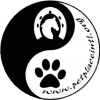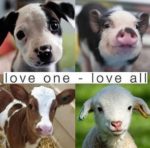Hurricane Harvey Rescue Mission

Hurricane Harvey was scheduled to make landfall in Texas mid-August and to remain over land for an unprecedented four days. It was formidable in its size, strength, and length. In the days preceding the hurricane, the prediction was that flooding would reach 55 inches. With each day, the news reports got worse, as Hurricane Harvey deluged South Texas and Louisiana. The water was rising exponentially, and it soon surpassed the 55-inch mark, reaching as much as 65 inches at its peak, absolutely devastating the affected areas.
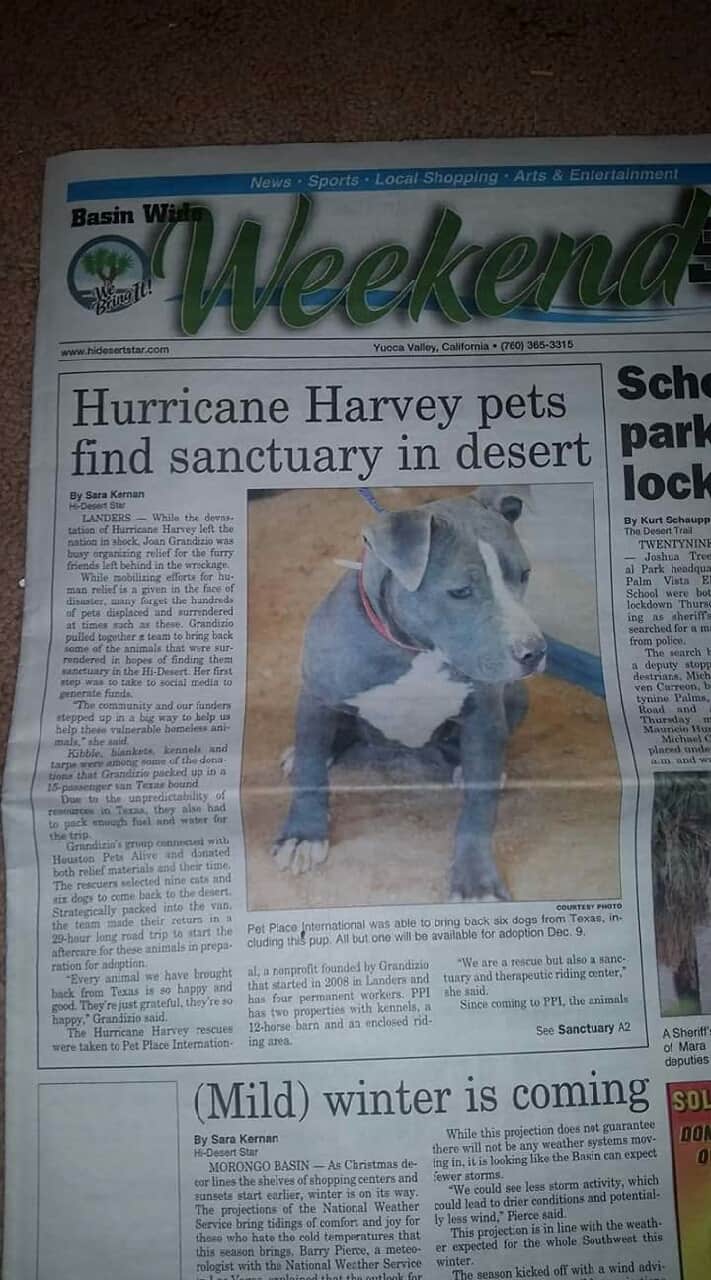
Hurricane Harvey quickly became one of the worst disasters on record, resulting in the destruction of hundreds of thousands of homes and displacing more than 30,000 people and countless numbers of animals. Many animals perished, and thousands became homeless. People began to relinquish their pets because their homes were destroyed and they could no longer care for them.
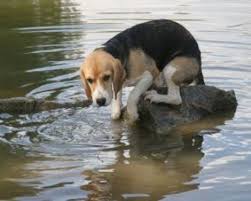
Word spread to the animal rescue community. Animals needed help, and they needed it fast. The first responders rushed down to Texas with boats and literally plucked animals out of the water and from roof-tops. Rescue organizations used areas where the water was beginning to recede as makeshift staging centers for animals.

Along with large organizations such as ASPCA and Best Friends, non-profit animal rescue groups from across the country sprang into action, stepping up to rescue, volunteer, and bring much-needed supplies.
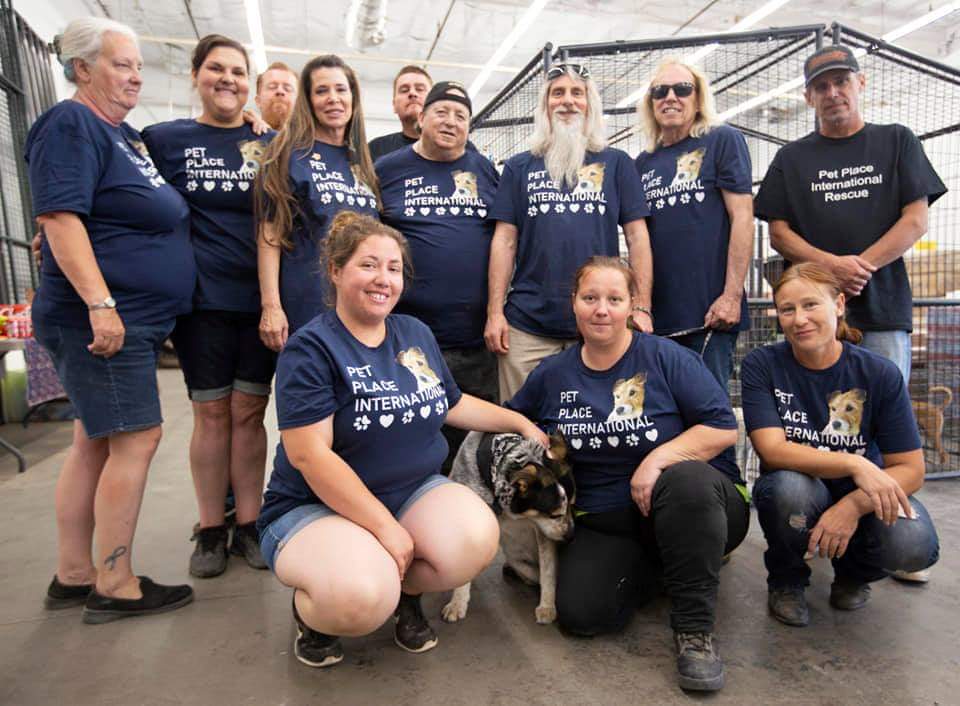
Pet Place International (PPI) was among the many rescue groups that became boots-on-the-ground first responders. We put the word out to the low-desert community and potential funders that PPI was preparing to help in Texas. We shared a list of supplies needed at the animal staging areas that we had been given by Texas responders. The community and our funders stepped up in a big way to help us help these vulnerable homeless animals. The community donated the much-needed supplies—blankets, towels, dog and cat food, bowls, crates, and tarps—and with the generous help of funders, we were able to cover the costs of the rescue journey.
PPI pulled our team together, loaded up our vehicle, and set out in a 15-passenger van from Southern California to Houston, Texas in mid-September. Our goals were to bring supplies, volunteer on scene, and bring relinquished dogs and cats back to our rescue ranch to prepare them for adoption.
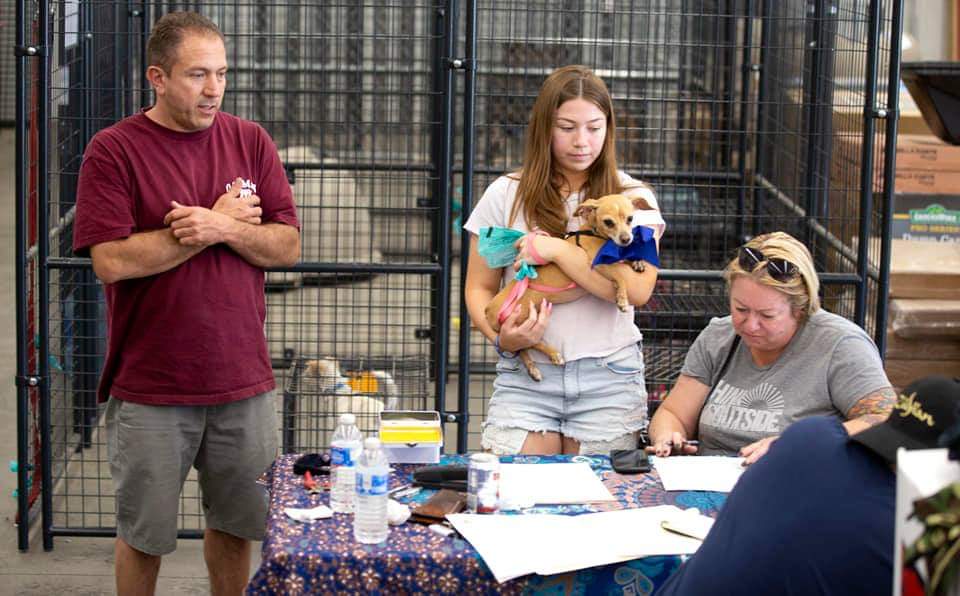
Our first stop was Houston Pets Alive. Their staging area was very organized and well set up. They had many local volunteers helping to clean, walk, feed, and medicate the animals. Before heading down, we had made sure to sign up as volunteers and rescuers, and Houston Pets Alive was prepared for our arrival. They pointed us to the hard-to-place or aggressive dogs. We walked through the raucous aisles of barking homeless dogs and chose the ones who would be coming home with us: two bully breeds, a shepherd mix, two Chihuahua sisters, and a senior Chihuahua girl.
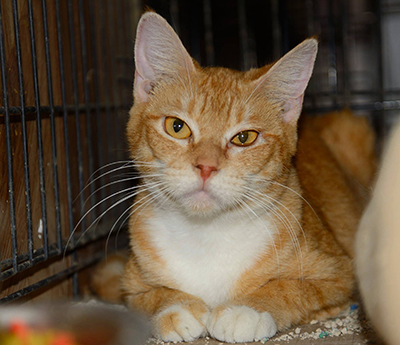
Next, we headed over to the kitty building. There were so many adorable kittens and cats available for rescue—we wanted to take all of them! We were able to choose nine cats to bring back with us. We placed a hold on them, with a plan to pick them up in a couple days. First, though, we needed to donate supplies and volunteer our time at the NRG Arena, which had been made into a shelter for people and their pets. As at Houston Pets Alive, everything at the NRG Arena was extremely well organized, and people were being well taken care of. People’s spirits were amazingly high considering the horrific tragedy they had been through.
We learned our lesson after Hurricane Katrina: animals tethered to poles or trapped in crates or pens have little chance of survival. A family’s disaster plan needs to include arrangements for its nonhuman members.
It was hard to believe that the staging area and NRG buildings were both under water just a few weeks earlier. We could see how far up the walls the water had risen, as the drywall had been ripped out to prevent mold. The streets were lined with piles of drywall, carpeting, furniture, mattresses, personal belongings, and other debris from people’s shattered lives. Otherwise, though, the houses and lawns looked unscathed. The flood-ravaged land had already started to repair itself.
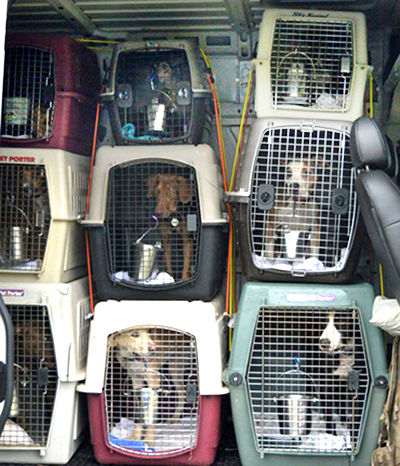
Time rushed up on us, and it was time to head back home; we needed to load up our dogs and cats and start the trek back to our rescue ranch. We arrived back at Houston Pets Alive at 7:00 a.m. on an extremely humid day with intermittent rain pouring down. We had our work cut out for us. We needed to unload the entire van, find the best arrangement for the crates inside it, remove them again, and then reload everything back in along with the rescued dogs and cats. It took nine hours to accomplish this not-so-small feat. We rearranged the crates and supplies several times in order to make sure each animal would have enough air-conditioning for the muggy ride home. Because of the temperature, there would be almost no stopping on the drive back; we needed to drive straight through to keep the animals cool. Plus, we were eager to get home with our precious cargo!
We made it home in about 29 hours, stopping only to feed, water, and walk the dogs. We pretty much ate donuts for breakfast, lunch, and dinner. The animals handled the drive really well. They were incredibly patient and never complained the entire trip. We pulled in at about 9:00 p.m. and were greeted by PPI volunteers, who were ready to help unload the van and get the animals situated. We were amazed at how sweet every single Hurricane Harvey animal is. It’s as if they feel lucky to have survived such a harrowing experience and are very grateful to have been saved.
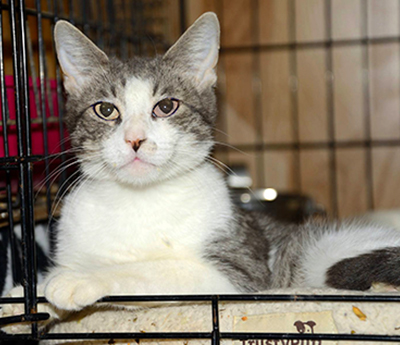
The next step was to get all the animals to the vet for check-ups, tests, X-rays, and any necessary treatment. So far all the kitties have been treated for upper respiratory infections (except one who may be pregnant – we’re waiting to find out before treating her, as medications are contraindicated for a pregnant animal), and the dogs have been treated for giardia and kennel cough. Baby-Girl, the senior Chi, got her teeth cleaned and her back X-rayed. We found out why she was unsteady on her hind legs. She has arthritis in her spine, for which there is no treatment. She doesn’t appear to be in pain and can still trot around well and even gallop in her lopsided way. Punkin, the large bully boy, tested positive for heartworm and is currently being treated; he should do really well since he is a youngster.
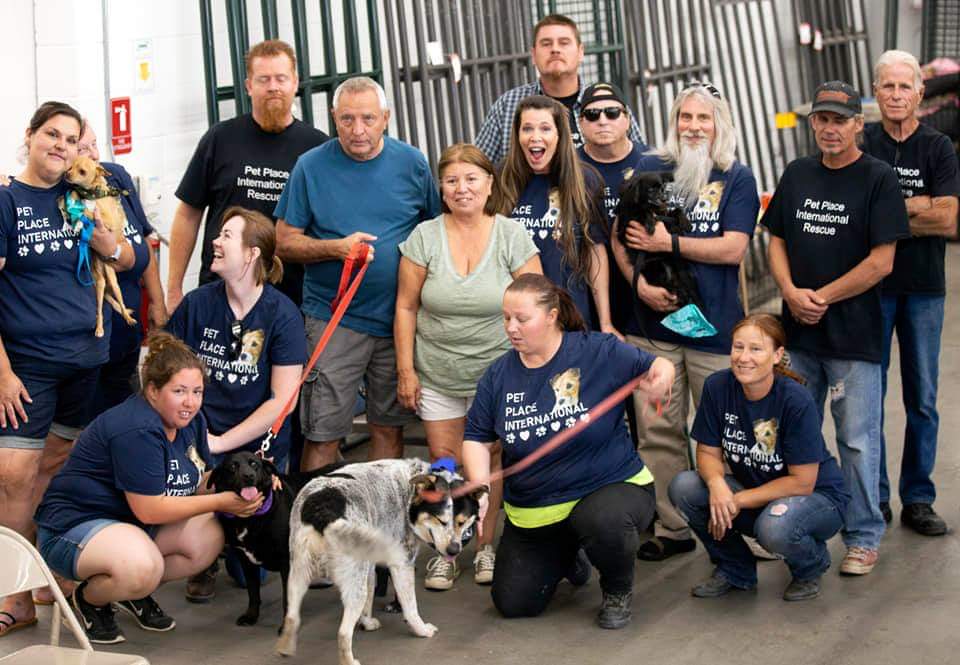
Rescue groups showed up in big numbers to do our part, and we made a huge impact. Given the immense human tragedy, the outpouring of care for pets was nothing short of remarkable. It was a tremendous privilege to be a part of something so important.
